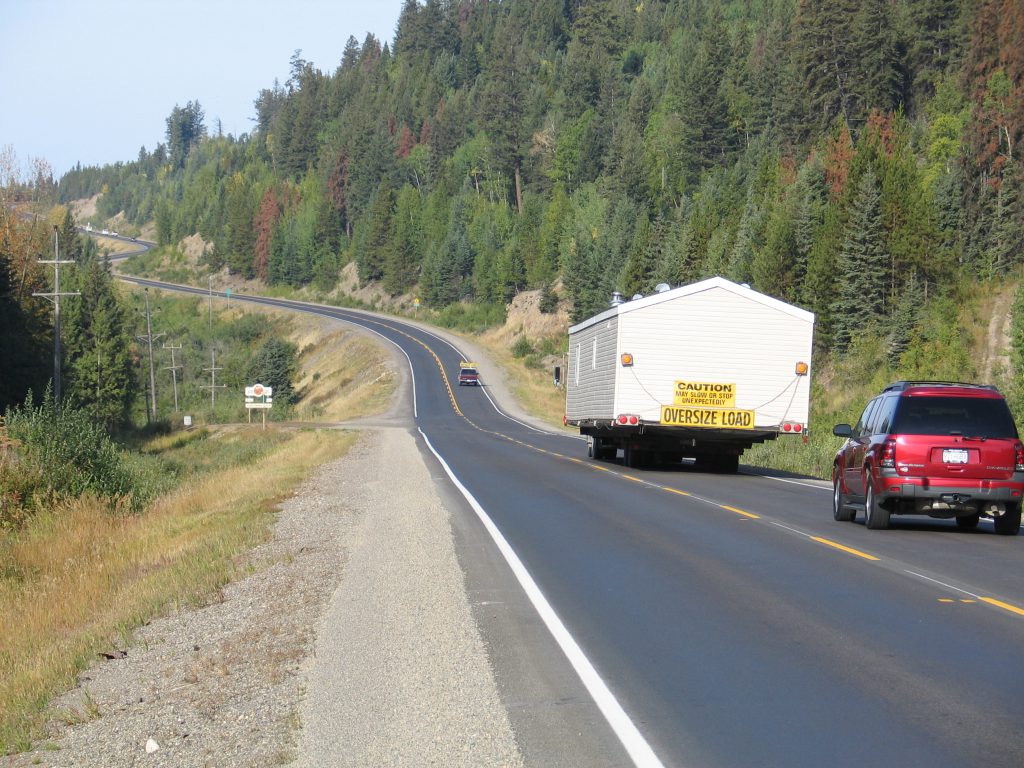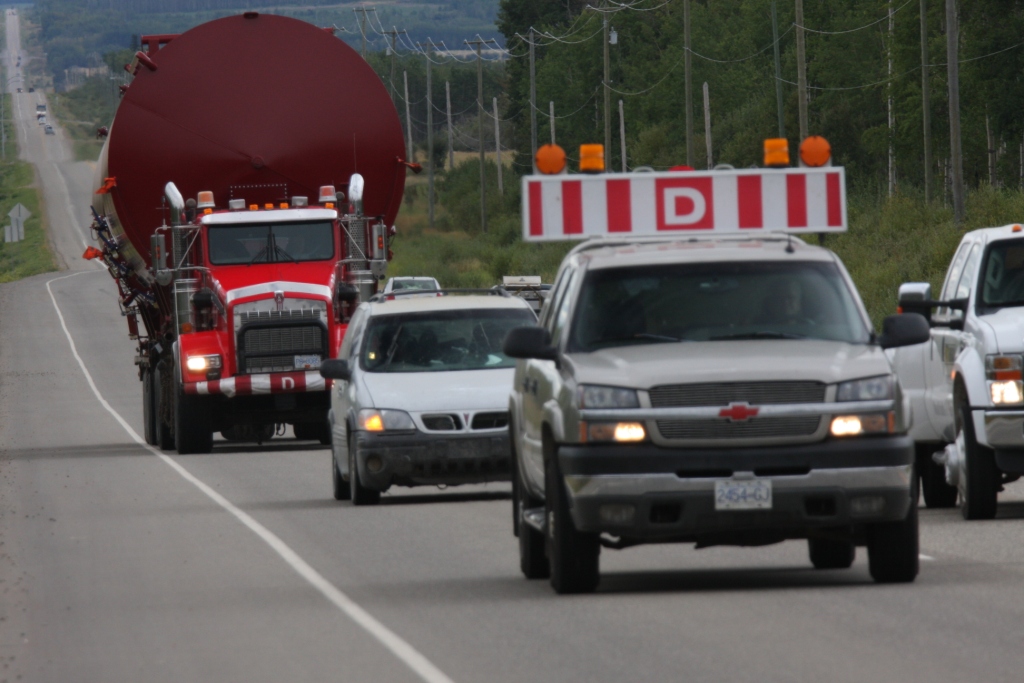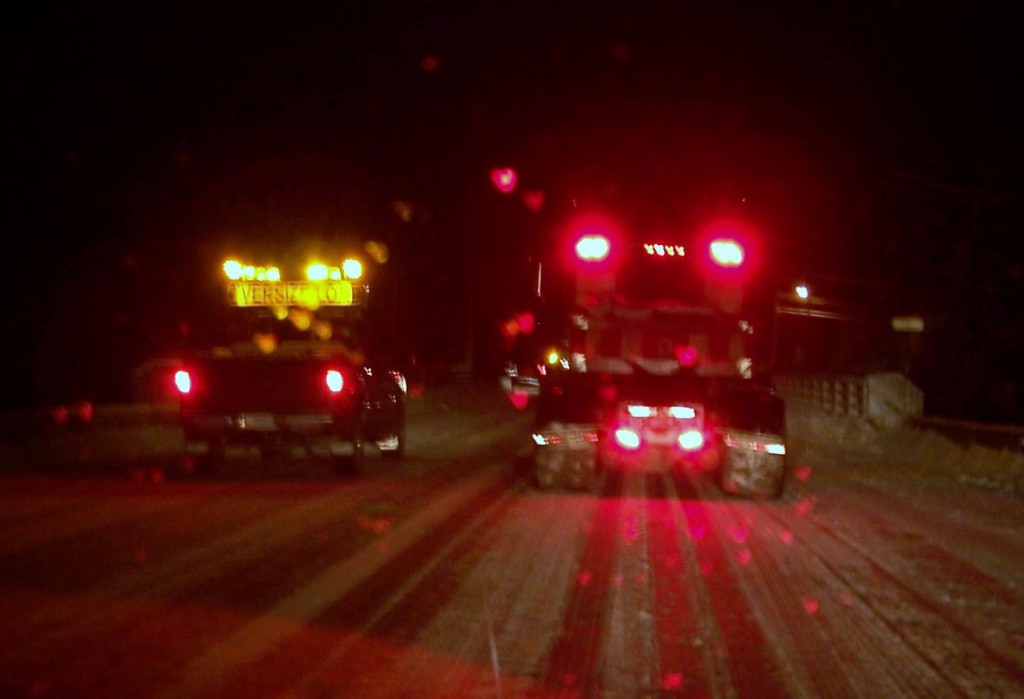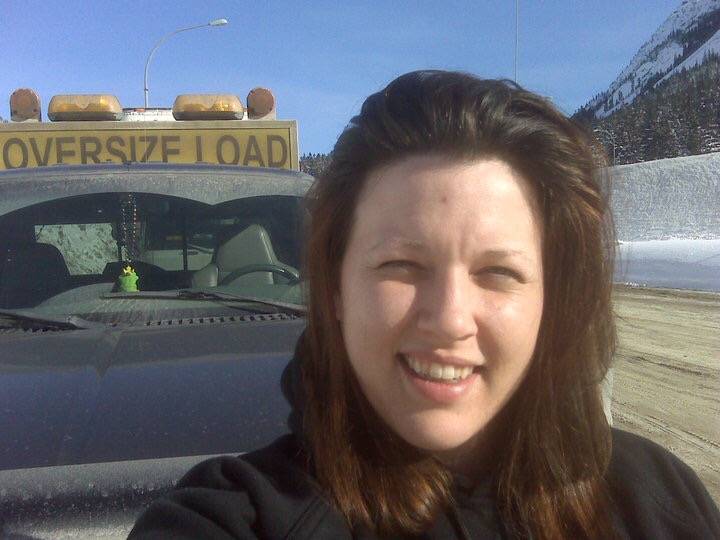
You may have spotted pilot cars – half ton pickups (typically) that escort trucks hauling gigantic loads like houses, bridge girders, windmill blades and parts of industrial plants.
But did you know how they work (and how to work with them), as they help move over-size loads safely to their destination?
A Pilot Car Overview
Pilot cars guide you, the load and the load’s driver and you so that everyone gets to their destination safely.
They work with and transport drivers as a team, staying connected by radio, as the pilot advises the truck driver of conditions all around them. There may be one or many pilot cars accompanying the load, and they may travel at the front, rear or side of the enormous load, or in mix of positions. Loads can be a crushing 91 tonnes or the length of an Olympic swimming pool. They might be extra tall or super wide, and authorized to travel only during certain times.
Motorists might react with uncertainty, confusion or frustration when they come upon a huge load occupying much of a road. Pilot cars warn them (gently) of what’s ahead. (Think of how nightmarish it would be on a dark and stormy night, to suddenly see a gargantuan load coming straight at you!) But the pilot car alerts motorists that something really big is coming and gives them time to slow down.

How to Drive Safely Near Big Loads
- Give pilot cars and oversize loads lots of space.
This is the overarching principle for whenever you are around a pilot car. - Give pilot cars and oversize loads lots of space. Yes, we’ve told you that already, but here are some reasons why…
Some oversize loads need the whole road. Even when there is more than one lane of travel in your direction, there may be obstructions on the side of the road like barricades, vehicles pulled over, pedestrians or bridge railings. So never “hang out” driving beside the oversize load, and never position yourself at the back corner of the load to get a better look. You create a dangerous situation by preventing the commercial transport driver from making lane changes or avoiding roadside obstructions. They may also need to suddenly slow down. - Be patient and don’t tailgate the pilot car.
Pilot cars often make quick lane changes; or suddenly slow down or speed up, to guide the load around an unexpected situation. Sometimes they might signal without warning. Tailgating a pilot car creates a frustrating lack of buffer zone for the pilot car driver, and that could end up going all wrong for you. Pilot cars might appear to be blocking an empty lane when travelling beside a load, not allowing you to pass, but they may be doing that to ensure the load has extra room to turn a corner or they are aware of a situation ahead. - NEVER get between a pilot car and its load.


This sign or a Wide Load, Long Load or Oversize Load sign on a truck or pilot car, means that an oversize load is being transported - Watch the pilot car for cues.
If a pilot car switches lanes suddenly to prevent you from overtaking the load, it’s for a good reason. Hang back for an extra bit of time while the oversize load navigates the road – that’s far better than being in a crash. - Let the pilot car know you understand.
When a load is oncoming, slow down and prepare to move to the shoulder if necessary. Turn on your four-way flashers to show the pilot car and load driver that you grasp the situation. (And that you get Tip #1 about staying clear and letting them do their work. - Obey the pilot car’s stop sign.
At a bridge, a pilot may put out a stop sign, flash their head lights, turn on four-way hazard flashers or honk their horn, to get your attention. This means a heavy haul needs to use the whole bridge. Pull over and wait. That way you won’t have to back up, looking awkward and sheepish. - Don’t follow a pilot car that is passing their oversize load.
In the daytime, most oversize loads travel with just one pilot car. When the road reduces to one lane in the direction of travel, the pilot moves to the front of the load to warn oncoming traffic. The timing is critical because the manoeuvre is done near the end of the multi-lane, and the oversize load adjusts its position on the road as the lane ends. If you are speeding up behind to follow the pilot car, you are taking a huge chance. Wait for the next safe passing area on a two-lane stretch. - Keep moving and give the load a lot of space when passing (a variation on Tip #1).
On a multi-lane highway, once the pilot signals and drops back behind a load, that’s your cue to pass. Wait for a clear path of travel. Be sure you can see the truck’s head lights in your rear view mirror, before pulling back into the lane. Being too close to the truck puts you in the driver’s blind spot – a major danger zone. It takes big trucks about eight times longer to stop than a personal vehicle, which means that they can’t react as quickly, if you need to suddenly stop or slow. - Be flexible and patient
A pilot car’s work is shaped by many factors. It’s different in the city, weather changes things drastically, and day or night affects the move, along with the amount of traffic and whether the load is travelling uphill, downhill or along curves. Pilot cars adapt to conditions as they guide the load, and they need that same flexibility and safety consciousness from you. So, one last time for Tip #1 – give them plenty of leeway.
Pilot cars play a big role in getting massive loads along our roads. You can help them by following their cues and these tips, to keep everyone safe.
Thank YOU, Jeannine
Our big thanks to pilot Jeannine MacKinnon for her huge contribution of knowledge, sharing the perspectives of different road users and for some well-crafted words that we used in this blog. (And for being one of our regular Twitter contacts.)

Our appreciation also goes to Paul Byford, for suggesting we produce pilot car safety information, then contributing valuable tips.
Join the discussion